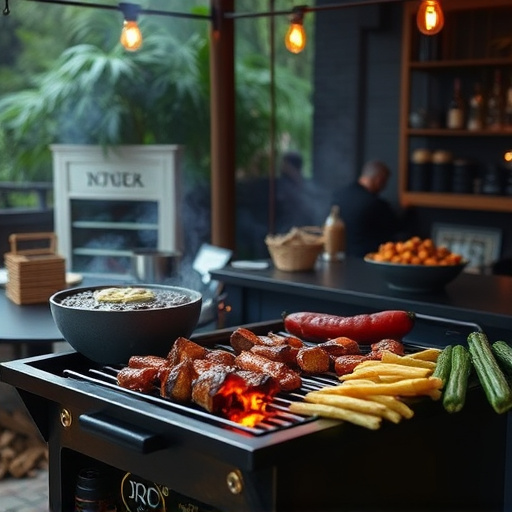This guide teaches beginners how to make delicious, personalized BBQ jerky at home with simple steps: choosing lean cuts of meat, marinating in flavorful mixes, and drying slowly. It provides tips on cutting techniques, marinade magic, drying methods (dehydrator, oven), seasoning blends, avoiding common mistakes, and creative protein variations for unique flavors. The ultimate DIY BBQ jerky experience!
“Discover the art of crafting your own mouthwatering BBQ jerky at home with this beginner-friendly guide. From understanding the fundamentals of this classic protein snack to mastering various preparation techniques, we’ll walk you through every step. Learn about choosing the perfect cut of meat, creating a flavorful marinade, and selecting effective drying methods. Explore different cooking approaches and uncover unique seasoning combinations. Avoid common pitfalls and get inspired for personalized creations. Get ready to impress your taste buds with an easy, homemade BBQ jerky recipe!”
- Understanding BBQ Jerky: A Beginner's Guide
- Selecting the Right Cut of Meat
- Marinade Magic: Choosing and Preparing Your Brine
- Drying Techniques for Tender Jerky
- Cooking Methods: Stovetop vs. Oven
- Tips for Seasoning and Flavor Profiles
- Common Mistakes to Avoid
- Creative Variations for Personalized Jerky
Understanding BBQ Jerky: A Beginner's Guide
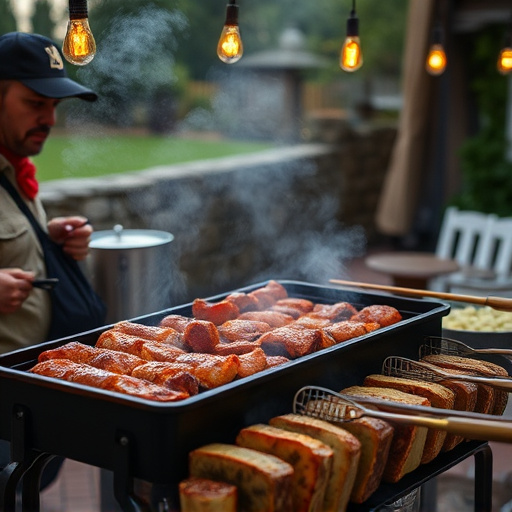
BBQ jerky is a delicious, portable protein snack that’s easy to make at home with a few simple ingredients. For beginners, it can seem intimidating, but understanding the basics is key. The process involves marinating lean meat cuts, usually beef or venison, in a flavorful mixture of spices, sauces, and sometimes vinegar or salt brine. This marinade penetration is what gives jerky its distinct taste and chewy texture.
After marinating, the meat is sliced thinly and dried using low heat over several hours until it reaches the desired level of dryness. This drying process preserves the meat and creates a shelf-stable snack. With just a few adjustments to spice levels and marinades, you can craft homemade BBQ jerky tailored to your taste preferences, making it a fun and rewarding project for culinary enthusiasts of all skill levels.
Selecting the Right Cut of Meat

When it comes to crafting your perfect BBQ jerky, choosing the right cut of meat is a crucial first step for beginners. Opting for lean, high-quality protein ensures your jerky turns out tender and flavorful rather than tough. Look for cuts like flank steak, sirloin, or even chicken breast for a classic BBQ jerky taste. These cuts tend to be less fatty, making them ideal for the dehydration process that’s at the heart of jerky preparation.
In terms of BBQ jerky recipes, simplicity is key. You’ll want a cut that can be easily sliced thinly, allowing for even drying and seasoning absorption. Additionally, these cuts are typically more affordable than marbling or fatty cuts, making them an economical choice for home chefs looking to master the art of DIY BBQ jerky.
Marinade Magic: Choosing and Preparing Your Brine
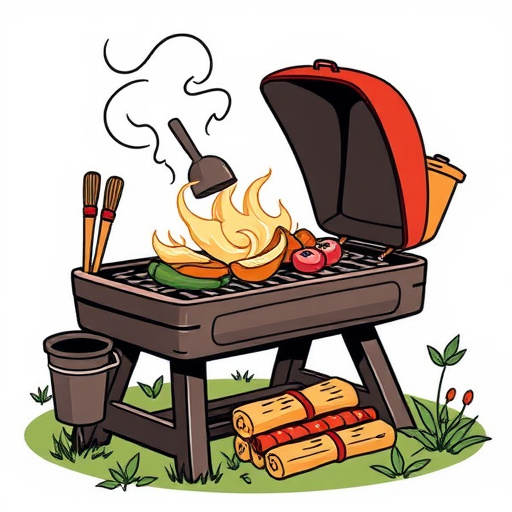
Marinade Magic: Choosing and Preparing Your Brine
For a delicious homemade BBQ jerky, the secret lies in the brine—a flavorful marinade that tenderizes your meat and infuses it with mouthwatering tastes. When crafting your brine for this easy BBQ jerky recipe, start by selecting high-quality ingredients like soy sauce, brown sugar, garlic, and various spices. These components form the foundation of a tantalizing brine that will transform your beef strips into savory jerky treats.
Prepare your brine by mixing these ingredients in a saucepan over medium heat until everything is fully dissolved. Let it cool before submerging your meat strips in the mixture for several hours or even overnight. This step ensures your jerky gains that signature zing from the marinade, making it a must-try BBQ jerky recipe for beginners looking to elevate their culinary skills and satisfy their taste buds.
Drying Techniques for Tender Jerky
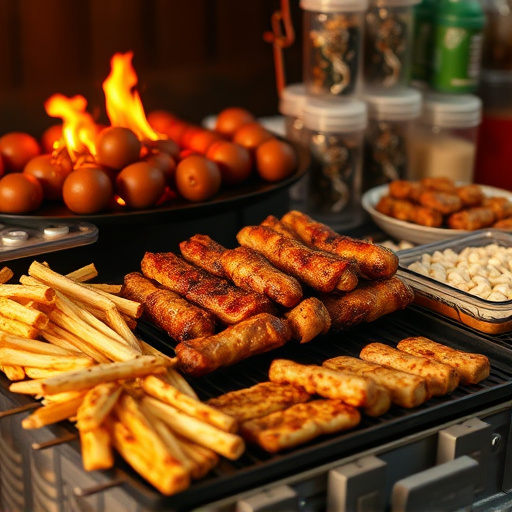
When it comes to drying techniques, the key to achieving tender and delicious BBQ jerky is patience. The most common method involves using a food dehydrator, which slowly reduces moisture content over several hours. This ensures even drying and prevents overcooking, resulting in a tender, lean jerky with a deep flavor. For those without a dehydrator, an oven set at the lowest temperature (typically 150-200°F) can be used. It’s important to monitor the process closely to avoid scorching or over-drying the meat.
A clever alternative for beginners is to utilize a solar dryer, taking advantage of free and abundant sunlight. By layering thin slices of seasoned meat on trays and placing them in direct sunlight (on cloudy days, reflect light with a mirror), you can achieve similar results. This eco-friendly approach adds a unique twist to your BBQ jerky recipe, allowing you to create mouthwatering treats without electricity.
Cooking Methods: Stovetop vs. Oven
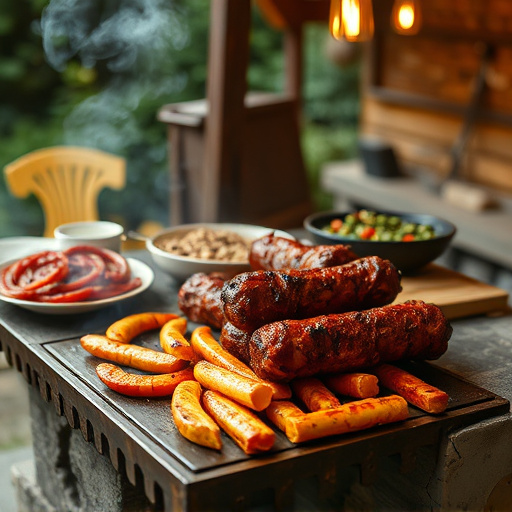
When it comes to cooking methods for your DIY BBQ jerky, there are two primary options: stovetop and oven. Each has its advantages and may appeal to different preferences. For a more traditional approach, the stovetop method allows you to carefully control the temperature and humidity throughout the drying process. This technique requires constant attention but offers a hands-on experience that many beginners appreciate. On the other hand, using an oven is simpler and requires less equipment, making it more accessible for those new to jerky making. However, ovens may not achieve the same level of crispiness and texture as their stovetop counterparts.
Consider your time constraints and culinary expertise when deciding between these methods. Stovetops offer precise control but demand a higher level of engagement, while ovens provide convenience with slightly less nuanced results. Regardless of method, preparing your BBQ jerky at home allows you to customize the seasoning blends and ensure a fresh, high-quality product free from artificial additives often found in store-bought varieties.
Tips for Seasoning and Flavor Profiles

When it comes to seasoning your BBQ jerky, the sky’s the limit! A classic combination involves a simple mix of salt, pepper, garlic powder, and onion powder for a well-rounded savory flavor. For a spicier kick, add cayenne pepper or chili powder; paprika and smoked paprika offer a smoky, rich taste. Don’t be afraid to get creative with herbs too – dried thyme, oregano, or rosemary can impart unique flavors.
Experimenting with different combinations will help you discover your preferred BBQ jerky flavor profile. Start with these tips and adapt them to suit your taste buds. Remember, the longer you let the meat marinate, the more intense the flavors will become, so adjust the soaking time accordingly.
Common Mistakes to Avoid

When making homemade BBQ jerky, beginners often encounter some common pitfalls that can ruin their first experience. One of the biggest mistakes to avoid is under-drying the meat. Jerky should be thoroughly dried to prevent mold and ensure a crisp texture. Over-seasoning with salt or spices can also negatively impact taste, so stick to a balanced blend tailored for jerky.
Another frequent error is not using a food thermometer. Cooking meat too little leaves it unsafe and chewy, while overcooking makes it tough and brittle. Always monitor the temperature carefully, aiming for an internal temperature of 160°F (71°C) for safety and the perfect texture.
Creative Variations for Personalized Jerky
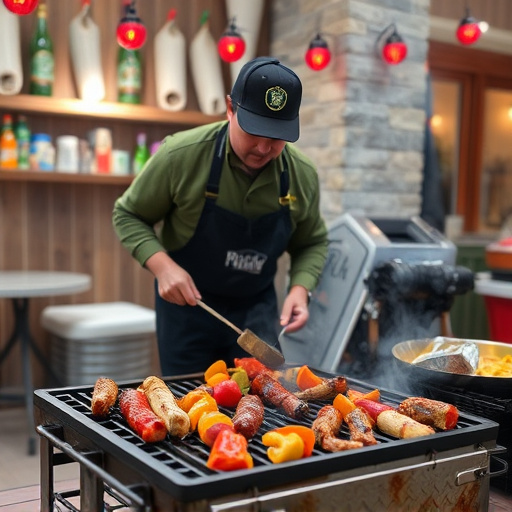
Personalizing your BBQ jerky recipe is a fun and creative way to make it your own, catering to your unique taste preferences. Beyond the traditional beef or chicken, explore different proteins like turkey, venison, or even fish for a distinct flavor profile. You can also experiment with marinades and spices – add a touch of sweetness with brown sugar or honey, or go spicy with chili powder and cayenne pepper. Herbs like rosemary, thyme, and oregano lend a delightful aromatic twist. For vegans or those looking to reduce meat consumption, consider plant-based protein alternatives like tofu or tempeh, marinated and sliced thinly for a satisfying jerky experience. These creative variations not only make your homemade BBQ jerky recipe more exciting but also allow you to cater to diverse dietary needs, ensuring everyone can enjoy this delectable treat.
